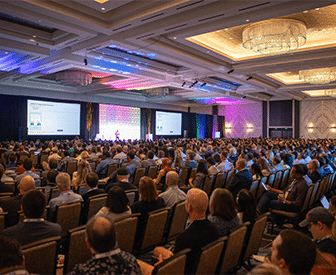In an era when customers routinely expect personalized experiences on par with those of Netflix and Uber, how can banks hope to keep their end-users happy and loyal? A recent Deloitte paper highlighted, for retail banks, just how high the customer experience bar has been set – and the degree to which the challenge is amplified by the increasing role artificial intelligence, data science, behavioral science and ethnographic research play in harnessing user data in the service of product development and design.
Notwithstanding the degree of difficulty, improving CX is increasingly a competitive necessity for banks. Fintechs continue to market their own products and services as being more attuned to customer needs than traditional bank offerings; and banks’ lagging infrastructure and legacy technology continue to limit their ability to keep up. At the same time, customers are quick to delete or scroll past messages that aren’t personalized, even as they expect faster response times – in every channel.
All of this is testing brand loyalty. A survey of 9,000 retail banking consumers across nine countries found that half of those customers would leave their bank for lower interest rates and fees. In fact, 13% had said goodbye to their primary bank in the past three years.
Amid all these challenges, prioritizing CX is critical to future success because great customer experience drives brand loyalty. Of the 83% of people who are happy with their bank, the top reason for their loyalty is excellent customer service (46%). That raises the question, can superior CX drive brand loyalty and, if so, how?
A recent white paper from HGS surveyed the CX landscape, pulling together research from a broad range of analysts, researchers and service providers. The resulting report, Are you a CX Rockstar?, suggests the answer is yes, and offers specific tips to succeed at CX.

Improve Your Business Outcomes Through Data & Analytics
Gain centralized access to the credit bureaus and 20+ alternative data sources. Leverage advanced analytics to optimize marketing campaigns and loan decisions.
Read More about Improve Your Business Outcomes Through Data & Analytics

Accelerate Time-to-Market with Rapid Implementation
Create a sustainable competitive advantage with faster time to market by drastically reducing implementation time.
Read More about Accelerate Time-to-Market with Rapid Implementation
Get Engaged
A Salesforce study suggests that providing great CX is not a nice-to-have luxury, but a necessity because 84% of customers say their experience interacting with a firm is as important as the products and services they receive. The paper details a four-step engagement journey:
1) Discovery & Awareness
2) Engagement & Interest
3) Convert
4) Retention.
The bottom line: Banks must connect with customers and then listen, understand, and address concerns to maintain brand loyalty. For example, on social media, responding to comments can dramatically increase site visits while ignoring them can lose customers.
Cultivate Loyalty
While some executives might worry about the investment required to improve CX, research from Bain & Co. finds that even a small increase in customer retention rates produces an outsized increase in profits. Other studies have shown that it costs five times as much to gain a new customer as to retain an existing customer. The HGS paper offers a range of loyalty-building ideas including calling customers on important dates, such as birthdays or anniversaries, or sending personalized promotions aimed at making them feel like members of an elite club. Such data-driven efforts can dramatically increase loyalty and revenues.
Be Seamless
Companies should view every customer interaction as critical: 52% of customers say they are willing to end their relationship with a business based on just one negative experience. Among other things, seamless CX is omnichannel, spanning email, text, chat and social media. It meets customers where they are and addresses them by name. And it offers consistency across channels. Automation can also make a difference, allowing chat bots etc. to respond quickly, reducing wait times while empowering the customer to drive their own solution. Finally, being proactive by providing updates when appropriate can have a lasting impact on how the customer perceives your brand. When done well, a seamless interaction can improve satisfaction, customer retention and revenue growth.

Aim High
The report highlights a paradox: Great CX requires immediacy, personalization, and responsiveness but the high demand for consistency means all of these capabilities must be automated as much as possible. Meanwhile, the competitive climb gets steeper: When competing firms update their CX, customers expect your firm to improve, too. (According to Salesforce, 73% of people say that when they have just one extraordinary experience with another company it raises their expectations for other companies.) Automation helps because it lowers operating costs and frees up contact center agents to handle more complex issues that require strategic thinking and decision-making. The refocused team members focus on the next frontier of CX success – using new tools (virtual assistants, voice assistants, intelligent routing, and visual recognition) to provide customers with instant support, for faster, more proactive customer service.
Differentiate, Using Data
Offering unparalleled, personalized CX begins with customer data analytics. Armed with insights into customer behavior, banks can optimize business processes, identify new opportunities, and deliver better experiences. Effectively employing customer data analytics will likely provide a competitive edge because only 29% of businesses say they do so. Predictive analytics can anticipate customer needs and provide proactive solutions while personalization engines can analyze customer data and behavior to provide recommendations, promotions, and experiences. Social media listening tools can monitor and analyze social media conversations to reveal how the brand is perceived online so companies can react accordingly.
Finally, HGS argues that improving CX is not a set-it-and-forget-it task but should be part of a process of continuous improvement aimed at accurately predicting customers’ emerging needs. Embracing a human-plus-digital approach can improve loyalty, cut costs, and increase revenues and profits, too.
Mark Egan has held leadership roles at Brookfield Asset Management, Allianz Global Investors, Guggenheim Partners and Bloomberg. Egan began his career at Reuters, where he worked as a journalist for nearly 20 years and won two Reuters Journalist of the Year awards. He has a Masters in economics from Trinity College Dublin and lives in Montclair, New Jersey.







